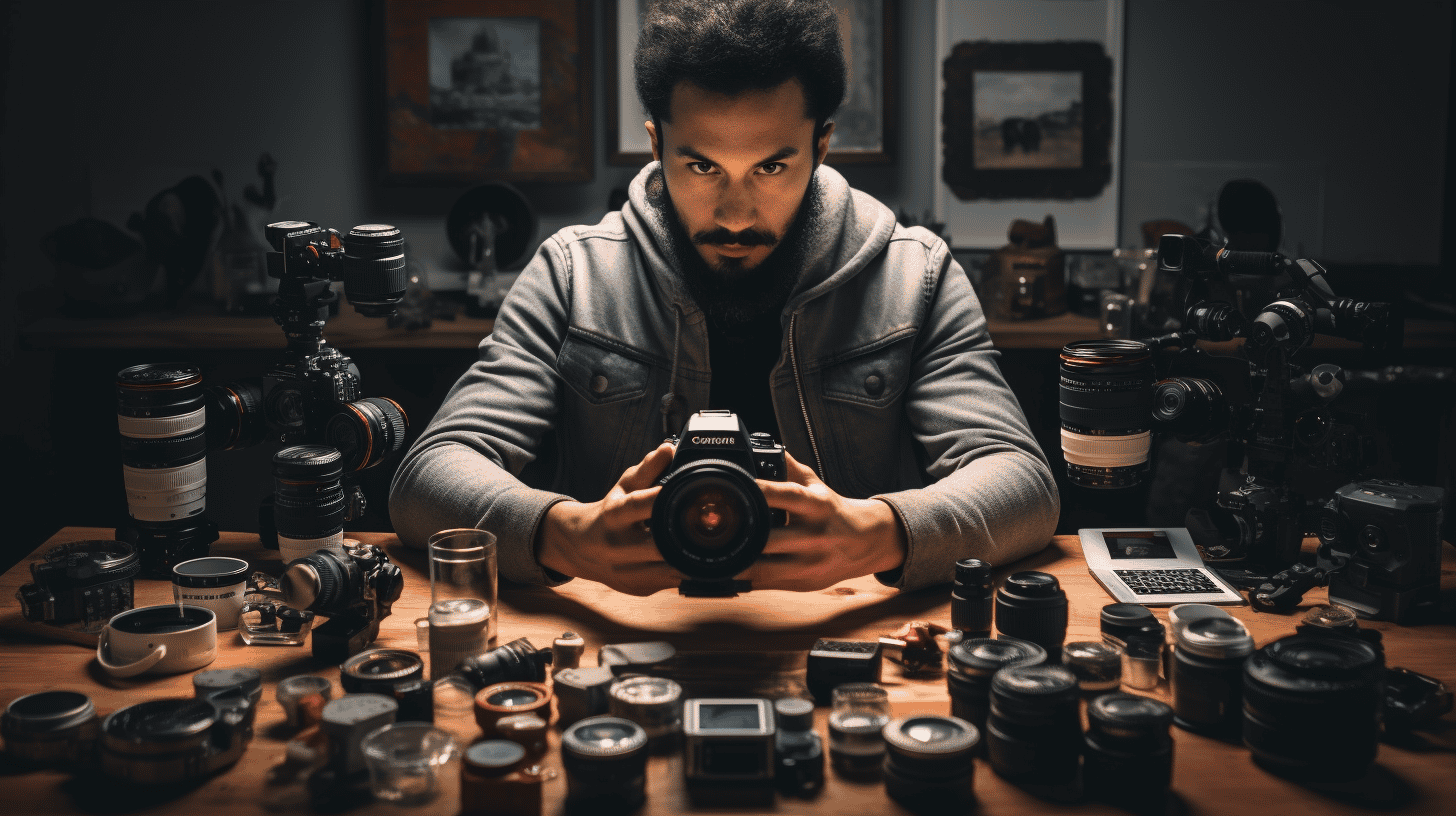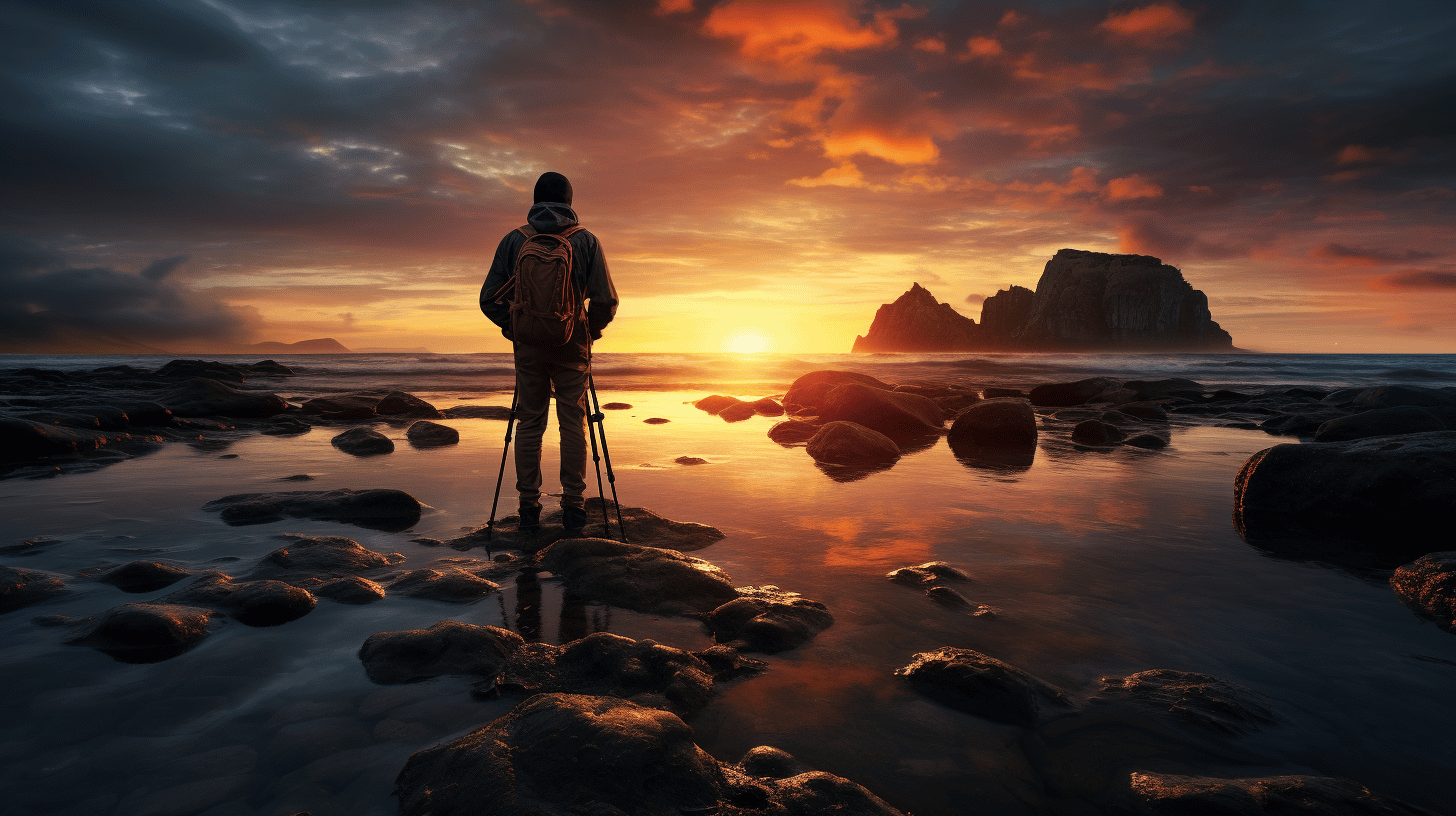Landscape photography is a captivating and rewarding genre that allows us to capture the beauty and awe-inspiring grandeur of the natural world. Whether you’re a seasoned pro or just starting out, having the right tools and techniques at your disposal is essential for achieving stunning landscape photographs.
In this article, we’ll explore the essential tools and techniques that every landscape photographer should have in their arsenal. From the gear you need to the composition techniques that will elevate your images, we’ve got you covered. So grab your camera and let’s dive into the world of landscape photography!
Essential Tools for Landscape Photography
Are you an avid outdoor enthusiast who loves to capture the beauty of nature through photography? If so, you know that landscape photography requires specialized tools and equipment to capture stunning images. In this article, we will explore some essential tools for landscape photography that will help you take your skills to the next level.
Wide-angle, Zoom, Prime lenses
One of the first things you need to consider when it comes to landscape photography is the type of lens you will use. Different lenses offer varying perspectives and focal lengths, allowing you to capture different aspects of a landscape. Here are a few types of lenses commonly used in landscape photography:
- Wide-angle lenses: These lenses are great for capturing expansive vistas and sweeping landscapes. They have a shorter focal length, typically between 14mm and 35mm, which allows you to fit more of the scene into the frame.
- Zoom lenses: Zoom lenses give you the flexibility to capture a wide range of perspectives without having to change lenses. They typically offer a range of focal lengths, such as 24-70mm or 70-200mm, allowing you to compose your shots with more precision.
- Prime lenses: Prime lenses have a fixed focal length, meaning they don’t zoom in or out. They are known for their excellent image quality, wide maximum apertures, and sharpness. Popular choices for landscape photography include 24mm, 35mm, and 50mm primes.
Drone, Tripod, L-bracket, Extension Tubes
Beyond lenses, there are several other tools that can greatly enhance your landscape photography experience:
- Drone: Drones have revolutionized landscape photography by offering unique aerial perspectives. They allow you to capture breathtaking aerial shots and unlock creative possibilities that were once limited to helicopters or planes.
- Tripod: A sturdy tripod is essential for landscape photography, as it provides stability and eliminates camera shake. It allows you to take long exposure shots, capture sharp images in low light, and compose your shots with precision.
- L-bracket: An L-bracket is a metal bracket that attaches to your camera and allows you to mount it vertically or horizontally on a tripod. It provides a more stable base for your camera and makes it easier to switch between landscape and portrait orientations.
- Extension tubes: If you’re interested in macro photography or capturing detailed close-ups of flowers and insects, extension tubes are a useful tool. They are placed between the camera body and the lens, allowing you to focus closer than the lens’s minimum focusing distance.
Neutral density filters, Remote timer
To achieve certain creative effects in landscape photography, filters can be invaluable. Here are a couple of filters that are commonly used by landscape photographers:
- Neutral density filters: These filters reduce the amount of light entering the camera, allowing you to use slower shutter speeds and create motion blur effects. They are particularly useful for capturing smooth waterfalls, milky way shots, and long exposures during the daytime.
- Remote timer: A remote timer is an essential tool for landscape photographers who want to minimize camera shake when using long exposures or time-lapse photography. It allows you to trigger the camera without touching it, ensuring sharp and shake-free images.
Sturdy Backpack, Weather-sealed camera
Lastly, investing in the right gear to protect your equipment is crucial for landscape photography. Here are a few items you should have:
- Sturdy backpack: A strong backpack is essential for carrying your gear comfortably and protecting it from the elements. Look for a backpack with padded compartments, adjustable dividers, and ergonomic straps for maximum comfort.
- Weather-sealed camera: Since landscape photography often involves shooting in challenging weather conditions, having a weather-sealed camera can provide peace of mind. These cameras are designed to withstand dust, moisture, and cold temperatures, ensuring that you can keep shooting even in adverse conditions.
In conclusion, having the right tools can make a world of difference in landscape photography. From lenses and filters to tripods and camera bags, each tool serves a specific purpose and enhances your ability to capture stunning images of the natural world. So, gear up and get ready to explore and capture the beauty of landscapes with these essential tools.
To read more about essential tools for landscape photography, check out Tools for Successful Landscape Photography.
Essential Techniques for Successful Landscape Photography
Capturing breathtaking landscapes is a dream for many photographers. The beauty of nature, the vastness of landscapes, and the ability to freeze a moment in time all contribute to the appeal. While photography is an art form that leaves plenty of room for creativity, there are some essential techniques that can help photographers elevate their landscape shots. In this article, we will explore some of these techniques that can help you capture stunning photographs of the great outdoors.
Using Leading Lines
One technique that can add depth and guide the viewer’s eye through the image is the use of leading lines. These are lines in the composition that lead the viewer’s gaze from one element to another. Leading lines can be natural, such as a road, a river, or a row of trees, or they can be man-made, like a fence or a path. By incorporating leading lines in your composition, you can create a sense of depth and draw attention to the main subject of your photograph.
Shooting at Mid-range Apertures
To ensure that your entire landscape is in focus, it is important to shoot at mid-range apertures. Landscape photography often requires a large depth of field to capture both the foreground and the background in sharp focus. By choosing an aperture between f/8 and f/16, you can achieve this depth of field and ensure that all elements in your composition are in focus.
Composing Carefully
Composition is key in landscape photography. Taking the time to carefully compose your shot can make a significant difference in the final result. Consider the rule of thirds, leading lines, and the placement of your main subject within the frame. Experiment with different angles and perspectives to find the most visually appealing composition for your landscape.
Avoiding Distracting Objects in Compositions
While composing your shot, be mindful of any distracting objects that may take away from the beauty of the landscape. These can include power lines, litter, or anything that doesn’t add to the overall aesthetics of the photograph. By removing or repositioning these objects, you can create a cleaner and more captivating composition.
Proper Exposure and Sharp Focus
Proper exposure and sharp focus are crucial elements in landscape photography. Meter for the highlights and ensure that you retain detail in the brightest parts of the scene. Consider using a graduated neutral density filter to balance the exposure between the sky and the land. Additionally, use a tripod to keep your camera steady and avoid any unintentional blurriness.
Shooting During the Golden Hour
The golden hour, which refers to the hour after sunrise or before sunset, is a magical time for photography. The soft, warm light during this time can transform a mundane landscape into a mesmerizing scene. Take advantage of the golden hour to capture the stunning colors, long shadows, and a sense of tranquility that can enhance your landscape photos.
Focusing Your Lens and Choosing the Right Depth of Field
Understanding depth of field and focusing techniques is essential for landscape photography. When shooting landscapes, it is often ideal to have a large depth of field to ensure that everything from the foreground to the background is in focus. Experiment with different focusing techniques, such as hyperfocal distance, to achieve maximum sharpness and depth of field in your shots.
Shooting in Manual Mode and Understanding the Histogram
For full control and precision over your landscape photos, consider shooting in manual mode. Manual mode allows you to have complete control over the exposure settings, such as aperture, shutter speed, and ISO. Understanding how to use the histogram can also help you accurately gauge the exposure of your images, ensuring that you capture the details in both the highlights and shadows.
By implementing these essential techniques into your landscape photography, you can elevate your photos and capture the awe-inspiring beauty of nature. Whether you’re a beginner or an experienced photographer, these techniques can help you improve your skills and create stunning landscape photographs. Remember to keep practicing, experimenting, and exploring new locations to truly master the art of landscape photography.
To learn more about techniques for breathtaking landscapes, check out this comprehensive guide on Techniques for Breathtaking Landscapes.
Conclusion
Landscape photography is an exciting and rewarding endeavor that allows photographers to capture the beauty of the natural world. By utilizing the essential tools and techniques discussed in this article, you can elevate your landscape photography game and capture stunning images.
Remember to invest in quality equipment such as wide-angle lenses, tripods, and neutral density filters to enhance your shots. Utilize techniques such as using leading lines, composing carefully, and shooting during the golden hour to create visually striking photographs.
Whether you’re a beginner or an experienced photographer, continuous learning and practice are key to improving your skills. Visit Wimarys.com, a website dedicated to photography and cameras, to access tutorials, reviews, and helpful articles that can inspire and guide you on your photography journey. Explore the website to find valuable resources and take your landscape photography to the next level.
So grab your camera, venture out into nature, and let your creativity soar. With the right tools and techniques, you’re bound to capture breathtaking landscapes that will leave a lasting impression. Happy shooting!
Visit Wimarys.com for more photography inspiration and resources. (*natural, conversational anchor text linking to the provided URL*)
Frequently Asked Questions
- What are the essential tools for landscape photography?
Some essential tools for landscape photography include a sturdy tripod, wide-angle lens, neutral density filters, remote shutter release, and a camera bag to carry your equipment.
- What techniques can I use to improve my landscape photography?
To enhance your landscape photography, you can try techniques like the rule of thirds, leading lines, foreground interest, understanding light and golden hour, using a polarizing filter, and experimenting with different perspectives.
- Do I need an expensive camera for landscape photography?
While having a high-quality camera can certainly make a difference in the image quality, you don’t necessarily need the most expensive camera for landscape photography. It is more important to understand and utilize composition techniques, lighting, and post-processing skills.
- How do I choose the right camera settings for landscape photography?
For landscape photography, it is recommended to use a small aperture (high f-number) to achieve a large depth of field, use a low ISO value to maintain image quality, and adjust the shutter speed based on the desired effect (e.g., freeze motion or create motion blur). Experimentation is key to finding the optimal settings for each shooting situation.
- What post-processing techniques are commonly used in landscape photography?
Post-processing techniques for landscape photography often involve adjusting exposure, contrast, and saturation, enhancing colors, cropping, removing distractions, and applying sharpening and noise reduction. Software like Adobe Lightroom and Photoshop are commonly used for these tasks.




0 Comments